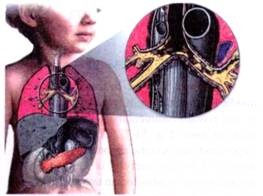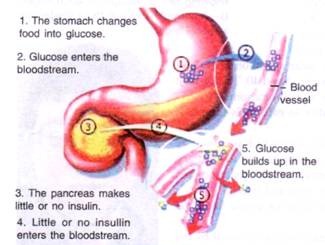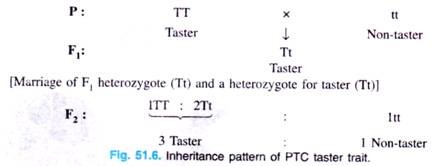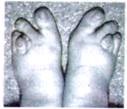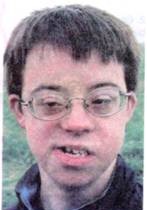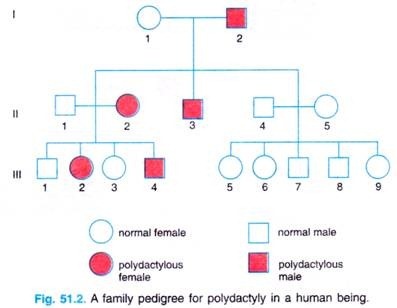In this essay we will discuss about the three major genetic disorders of human beings: 1. Recessive Inherited Disorders 2. Lethal Recessive Inheritance 3. Disorders Due to Dominant Alleles.
Genetic Disorder # 1. Recessive Inherited Disorders:
(i) Albinism:
Albino (L., albus = white) humans are devoid of melanin pigment in the skin, hair and eyes. The skin is very light and hair whitish yellow and eyes appear pinkish. Albinos have poor vision, are sensitive to sunlight and prone to skin cancer. Albinism is rare in its occurrence, i.e., one out of 20,000 individuals is albino.
Albinism is caused by a recessive, mutant allele in homozygous condition (aa).
Genetic Disorder # 2. Lethal Recessive Inheritance:
Sometimes, a recessive gene has such a drastic effect that the infant dies before or after birth.
Some common examples of such lethal recessive genes are the following:
(i) Congenital ichthyosis:
It is caused by recessive alleles and is characterized by the cracking and separation of skin into large scaly sections. The fissures lead to bleeding, infection and death. Affected infants are either aborted or are born premature.
(ii) Infantile amaurotic idiocy (Tay-Sach’s disease):
This disease is common in persons of Jewish origin. It is caused by homozygous condition of an autosomal recessive allele. Affected children appear normal and healthy at birth but within six months the nerves of the brain and spinal cord show remarkable degeneration. By the age of one year, child lies helplessly in his crib, later loses his sight and finally becomes paralyzed. The death occurs by the age of 3 or 4 years.
Due to deficiency of a lysosomal enzyme of lipid metabolism, the hexosaminidase A, lipids accumulate in the nervous tissue causing macrocephaly and mental retardation.
(iii) Cystic fibrosis:
It is a common disease of Caucasians that appears in early childhood. It is caused by recessive alleles and involves functional disorder of the exocrine glands. The pancreas secrete abnormally thick or viscid mucus material (lacking pancreatic enzymes) which collects in intestine and blocks digestion. Patient suffers with difficult breathing due to mucus accumulation in airways and by excessive loss of salt in the sweat.
Cystic fibrosis is a hereditary disorder characterized by lung congestion and infection and malabsorption of nutrients by the pancreas.
(iv) Infantile hypertrophic pyloric stenosis:
This disease is characterized by obstruction of intestine in the neonatal period (3rd – 7th week after birth).
(v) Thalassemia:
Thalassemia or Cooley’s anaemia is a haemoglobin disease somewhat similar to sickle cell anaemia. It occurs mostly in children (In India and other countries such as Italy Greece and Syria) and is nearly 100 per cent fatal (lethal).
Thalassemia is controlled by a single gene c which in homozygous condition (cc), produces the severe Cooley’s anaemia or thalassemia major and causes death of the patient. The heterozygous condition of this lethal gene (Cc) results in a mild form of the disease called thalassemia minor or microeythemia.
(vi) Diabetes mellitus:
It is a variable disorder of carbohydrate metabolism caused by a combination of hereditary and environmental factors. It is characterized by inadequate secretion or utilization of insulin by excessive urine production, by excessive amount of sugar (glucose) in blood and urine and by excessive thirst, hunger and loss of weight. Insulin hormone is secreted by β-cells of Islets of Langerhans of pancreas.
Diabetes mellitus
Genetic Disorder # 3. Disorders Due to Dominant Alleles:
1. PTC tasters:
In human beings, there exists an autosomal dominant allele for the ability to taste the bitterness of the chemical, called phenylthiocarbamide (PTC). This gene is inherited in simple Mendelian fashion to give a 3: 1 monohybrid ratio (Fig. 51.6).
Thus, tasters of PTC may have two genotypes (TT and Tt), whereas non-tasters will have only one genotype (tt).
2. Brachydactyly:
In this disorder, the middle joints of the digits (phalanges) in hands or feet remain rudimentary and fuse with an adjacent joint (Fig. 51.7). Consequently, the fingers and toes become abnormally short. The defect of brachydactyly is caused by a dominant gene existing on an autosome. When an abnormal gene dominates the normal gene, this is called dominant inheritance.
Brachydactyly
3. Huntington’s chorea:
It is a fatal disease of man. It is characterized by uncontrolled jerking of body (due to involuntary twitching of voluntary muscles) and a progressive degeneration of the central nervous system (i.e., brain and spinal cord), accompanied by gradual mental and physical deterioration. The mean age of onset of these symptoms is between 35 and 40. This disease is caused by an autosomal dominant gene (on chromosome 4).
Huntington’s chorea
4. Tongue rolling:
The trait of ability to roll one’s tongue is also controlled by a dominant allele.
5. Achondroplasia:
It is a genetic disorder which is caused by an autosomal dominant allele. It affects normal growth of cartilage resulting in a form of dwarfism. The affected individuals are dwarf, having normal torso but abnormally short arms and legs.
6. Tylosis:
The persons with tylosis have excessive thick and hard skin on their palms and so
7. Anonychia:
This congenital disease is characterized by the absence of some or all nails of the finger and toes.
8. Dentinogenesis imperfect:
It is a disorder of tooth development and is inherited as autosomal dominant. It is characterized by relatively soft enamel in both the primary and permanent teeth that makes the teeth vulnerable to fracture, abrasion and wear.
9. Polydactyly:
Presence of extra fingers or toes (Fig. 51.2).
